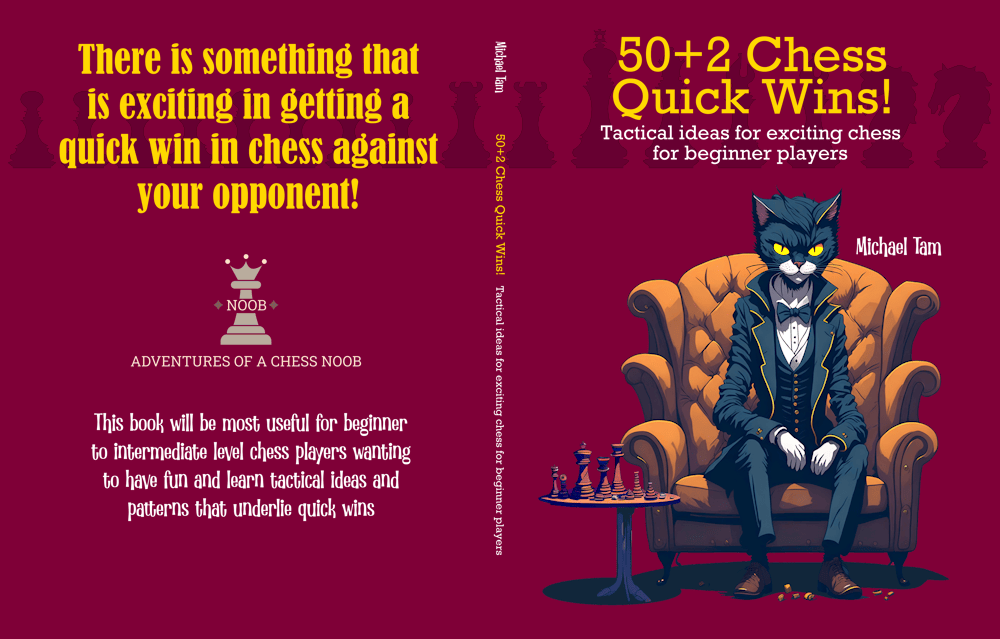
Scotch Gambit | CHAOS TACTICS!
#scotch #scotchgambit #duboisreti #chaoschess
This was a game that I arguably should have lost. I made a mistake due to being distracted in the game, blundering a full piece on move 6 against the Scotch Gambit. Stockfish gave an evaluation of [+2.6]. And yet, I won by my opponent resigning on move 20, and they were one step away from mate. Let's see what happened!
Against the Scotch Gambit, I play the Dubois Reti Defense (1. e4 e5 2. Nf3 Nc6 3. d4 exd4 4. Bc4 Nf6). This is probably the best response to the Scotch Gambit as after the usual e-pawn push, and we play the critical response with our d-pawn (5. e5 d5), White will often make a mistake against the tension. In this game, White played (6. Bb3), which is an inaccuracy [-1] and Black has basically won the opening.
However, at this point, I got quite distracted as I was answering a message on another device. Don't do this in a live game of chess! I saw that Ne4 was the logical move, but decided to try to calculate whether something else might be a candidate move as well. In my distraction, I lost view of the "continuity" that my knight on f6 was hanging and played Bg4, ostensibly pinning White's knight to the queen. This is a straight up blunder [+2.6]! White happily captures my knight with their pawn!
I knew that I had made a major mistake. So my tactic at this point onwards was to play what I call CHAOS TACTICS. Simply, to play aggressively, prioritising development and tactical complications over preserving material - that is, to allow seemingly chaotic sacrifices that confuse and bewilder! The Scotch Gambit lines supports this style of play - it's rather tricky and trappy for both White and Black, especially with the potential for early open centre files. The nature of White's multiple e-pawn moves also means that White often isn't ahead on development with the gambit.
We see the result of this on move 9. Although I'm down a full piece, I have some compensation in that I've two pieces developed, have castled, and control the semi-open d-file with my rook. White's king is in danger on the e-file with the fully open e-file. Their next move (10. Nbd2) is a massive blunder [-4.8] and my tactic worked, except that I didn't see the winning line! I had the opportunity to force White to trade their queen for one of my rooks (see the PGN for the alternative line from move 10).
The next couple of moves are rated as respective consecutive blunders as neither I, nor my opponent, see this line, or defend against it. However, I clearly have captured the initiative as after (11... Rhe8+), I now control both centre files with my rooks, and the king was forced to sidestep to f1, forgoing their ability to castle, and limiting the ability of the rook on h1 to develop.
The next series of moves are interesting. Stockfish rates the position as winning for White at times. However, White is facing against mating attacks almost every move, meaning that they had to walk a highly accurate line. On move 15, White seemingly found a move to force a queen trade, by pinning my queen against my king. However, (15... f5) blocks the pin, and I reactivate immediate threat of back rank mate on e1. White finds (16. g3) and here, I decide to sacrifice my hanging bishop on b4 by defending my f5 pawn with (16... g6). Chaotic sacrifices! White correctly captures my bishop, but I ignore it and play (17... Qd5), another immediate checkmate threat. Expectedly, White played (18. Rg1) moving their rook out of the way. Here, I played (18... Re7), looking as if I were going to double my rooks on the e-file, which seemingly would be another checkmate. I knew that this was a bluff, as it wasn't fast enough with my a-pawn now open to attack from White's rook on a1.
White fell for my bluff! They played (19. Qg2), seemingly asking for a queen trade yet again. This was a terminal blunder [-M3]. By this time, I had seen that winning line that I did not see earlier in the match. Initially, I thought that the queen on b5 with check wouldn't work as White could play c4, blocking the diagonal, attacking the queen, with the pawn defended by the knight on d2. However, I now saw that c4 doesn't work as I had the principal chaotic chess move, en passant!
So, (19... Qb5+); White plays (20. c4) and I immediate respond with the beautiful en passant discovered check (20... dxc3+)! Emotional damage, and White resigned with mate unavoidable next turn. GG!
The big takeaway from this game is to consider making use of this tactical style when in a losing position. With risk comes opportunity, and risks are less when you’re already losing! Losing fast vs losing slow is still losing.
Game on chess.com: https://www.chess.com/game/live/82261206653



